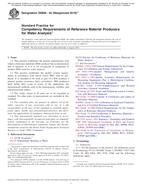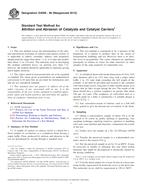1.1 This specification covers hot-rolled, heavy-thickness, high-strength, low-alloy columbium, or vanadium hot-rolled sheet and strip, or combinations thereof, in coils beyond the size limits of Specification A607. This material is intended for miscellaneous applications where greater strength and savings in weight are important. The material is available as two classes. They are similar in strength level, except that Class 2 offers improved weldability and more formability than Class 1. Atmospheric corrosion resistance of these steels is equivalent to plain carbon steels. With copper specified, the atmospheric corrosion resistance is somewhat enhanced.
Note 1-For methods of establishing the atmospheric corrosion resistance of low-alloy steels see Guide G101.
1.1.1 This material is available only in coils described as follows:
Size Limits, Coils Only Product Width, in. (mm) Thickness, in. (mm) Strip Over 8 to 12 0.230 to 0.750, incl (Over 200-300) (Over 6.0 to 19) Sheet Over 12 to 48 0.230 to 0.750, incl (Over 300-1200) (Over 6.0 to 19) Over 48 (Over 1200) 0.180 to 0.750, incl (Over 4.5 to 19)
1.2 Sheet and strip in coils of sizes noted in 1.1 can be included in this specification only with the following:
1.2.1 The material is not to be converted into steel plates for structural or pressure vessel use.
1.2.2 This specification is not applicable to the steels covered by Specification A635/A635M.
1.2.3 The dimensional tolerances of Specification A635/ A635M are applicable to material produced to this specification.
1.2.4 The material is to be fed directly from coils into a blanking press, drawing or forming operation, tube mill, rolling mill, or sheared or slit into blanks for subsequent drawing or forming.
1.2.5 Not all strength levels are available in all thicknesses. The user should consult the producer for appropriate size limitations.
1.3 The values stated in either inch-pound units or SI units are to be regarded separately as standard. Within the text, the SI units are shown in brackets. The values stated in each system are not exact equivalents; therefore, each system must be used independently of the other. Combining values from the two systems may result in nonconformance with the specification.
Product Details
- Published:
- 01/01/1997
- Number of Pages:
- 4
- File Size:
- 1 file , 23 KB


